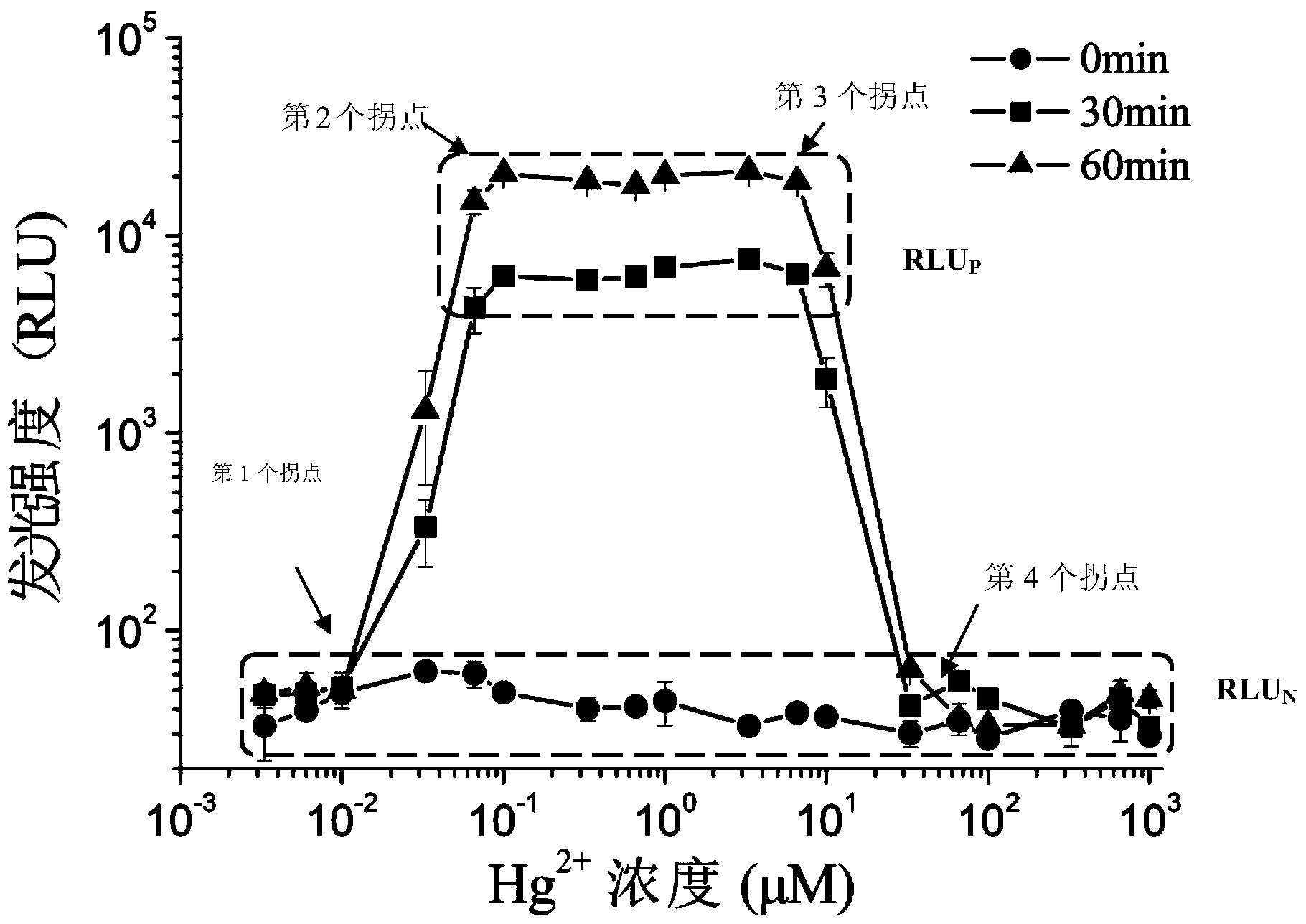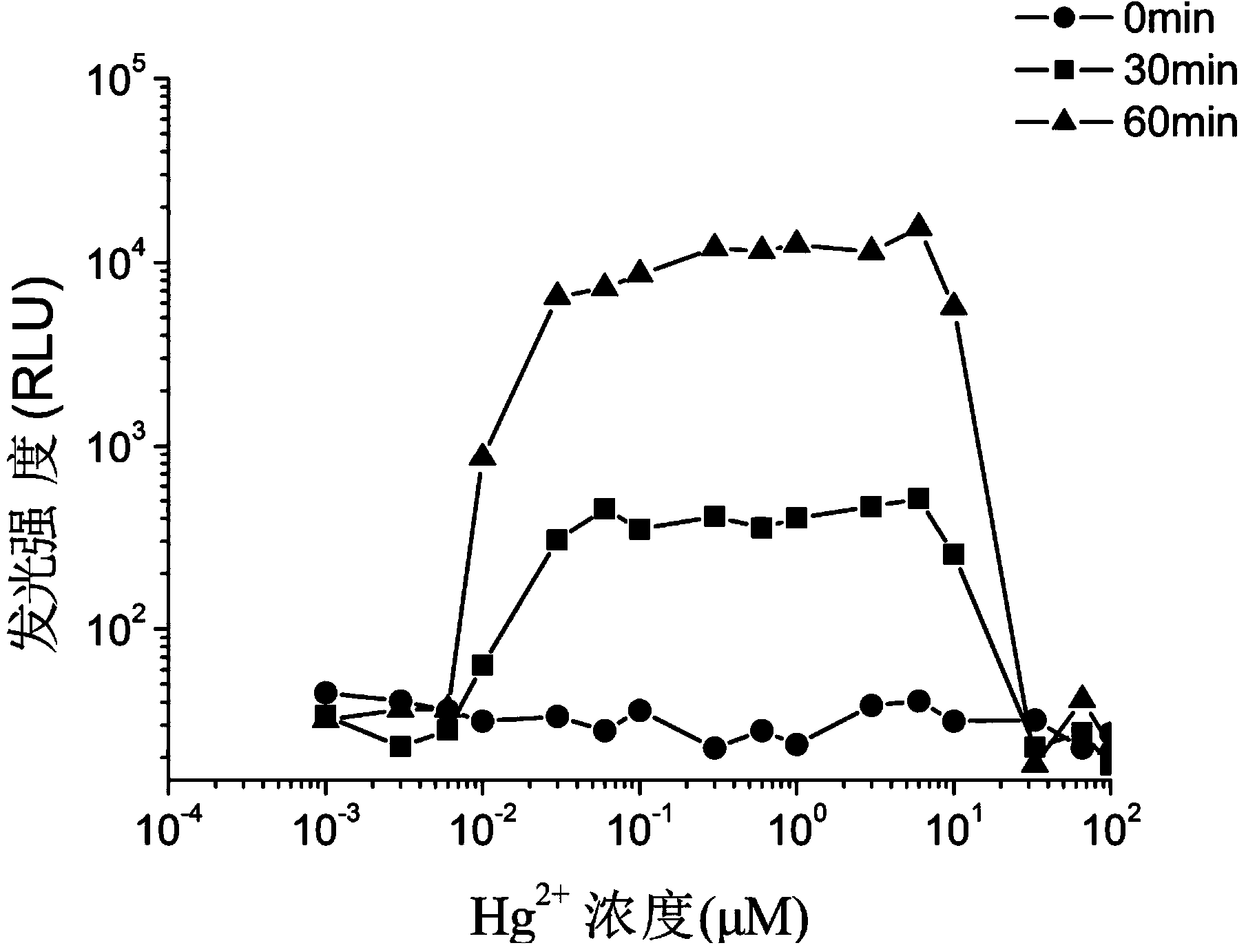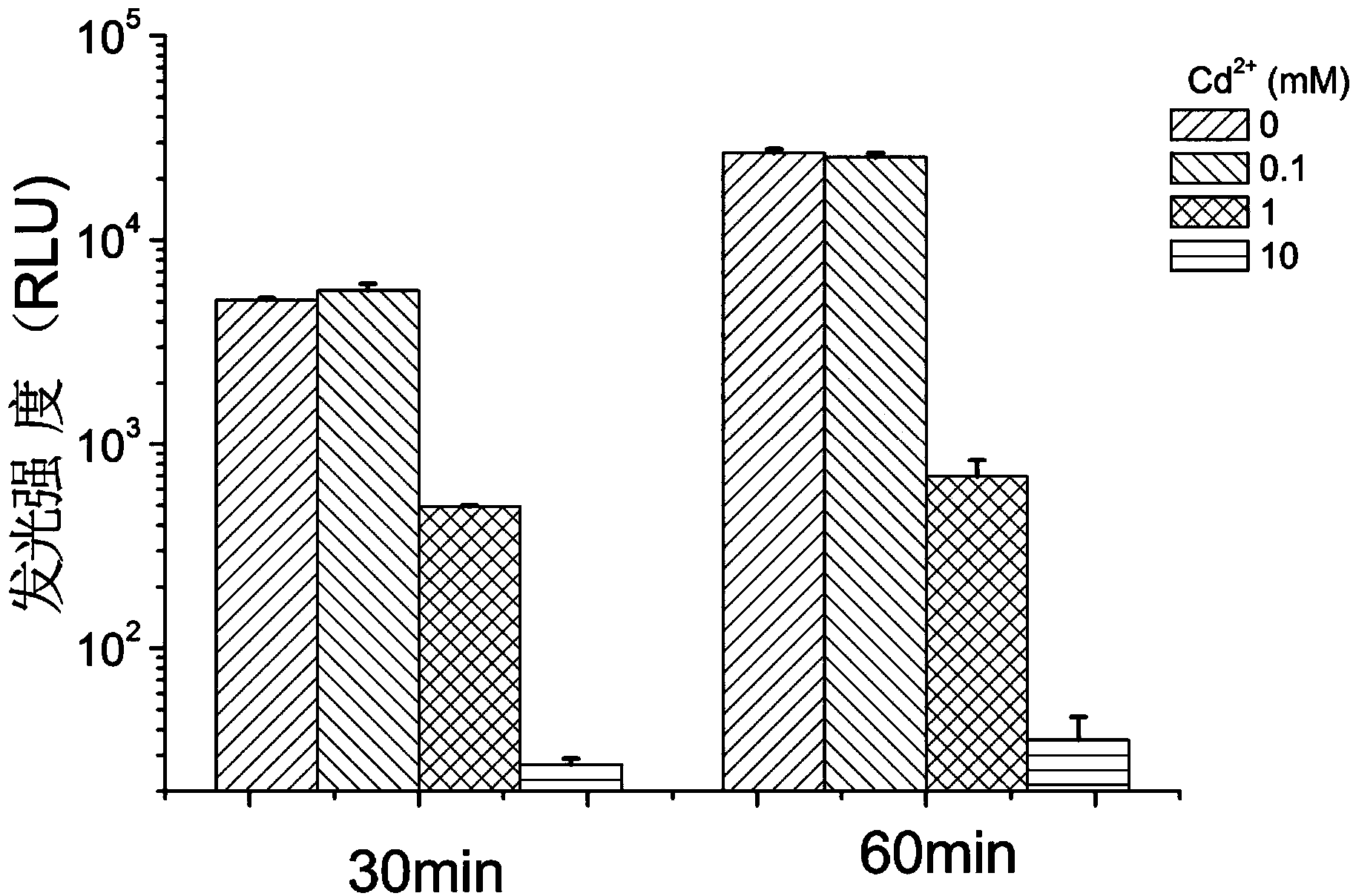Recombinant luminous bacteria and application thereof
A technology of recombining bacteria and bacteria liquid, applied in bacteria, chemiluminescence/bioluminescence, analysis by chemical reaction of materials, etc., can solve the change of luminescence expression of natural luminescent bacteria, difficult to evaluate the actual effect of mercury, change heavy metal Bioavailability and other issues, to achieve the effect of easy automatic online, high reliability of results, and avoidance of false negative problems
- Summary
- Abstract
- Description
- Claims
- Application Information
AI Technical Summary
Problems solved by technology
Method used
Image
Examples
Embodiment 1
[0046] Example 1, Construction of mer-mercury-responsive recombinant luminescent bacteria
[0047] When constructing mer recombinant luminescent bacteria, the regulatory recognition element composed of R gene and o / p site is inserted into the upstream of the luminescent gene lacking the promoter element, and introduced into suitable recipient cells to obtain mer recombinant luminescent bacteria that can specifically recognize mercury .
[0048] Using the genomic DNA of Pseudomonas putida strain SP1 as a template, design the upstream primer 5'-CGC GGATCC GCATTTCTCCTTTCGA-3' (SEQ ID No.1, the sequence shown by the underline is BamH Ⅰ enzyme digestion recognition site) and the downstream primer 5'-CCGGAATTCTTACGCAACGGGAAAT-3' (SEQ ID No.2, the sequence shown by the underline is EcoR Ⅰ enzyme digestion Recognition site) for PCR amplification to obtain the merRo / p sequence in genomic DNA, the sequence is shown in SEQ ID No.3, the 10th to 80th positions from the 5' end in SEQ ID N...
Embodiment 2
[0051] Example 2, detection of mercury in water samples with recombinant luminescent bacteria mer-pUCD615
[0052] The recombinant luminescent bacterium mer-pUCD615 can achieve a single specific response to heavy metal mercury without interference from other metal pollutants such as cadmium and lead, and there is no false positive problem. Under the condition of low cytotoxicity, as long as there is bioavailable mercury in the water sample, the strain can change from non-luminescent to continuous luminescent, and then detect the luminous intensity by modern photon detection technology, and use this strain to determine the bioavailable mercury in the water body. The specific steps for the bioavailable mercury concentration range are as follows:
[0053] 1. Preparation of bacteria solution for testing
[0054] Both methods shown in (1) or (2) below are acceptable.
[0055] (1) Inoculate the recombinant luminescent bacterium mer-pUCD615 in LB medium and culture it in a shaker a...
PUM
 Login to View More
Login to View More Abstract
Description
Claims
Application Information
 Login to View More
Login to View More - R&D
- Intellectual Property
- Life Sciences
- Materials
- Tech Scout
- Unparalleled Data Quality
- Higher Quality Content
- 60% Fewer Hallucinations
Browse by: Latest US Patents, China's latest patents, Technical Efficacy Thesaurus, Application Domain, Technology Topic, Popular Technical Reports.
© 2025 PatSnap. All rights reserved.Legal|Privacy policy|Modern Slavery Act Transparency Statement|Sitemap|About US| Contact US: help@patsnap.com



